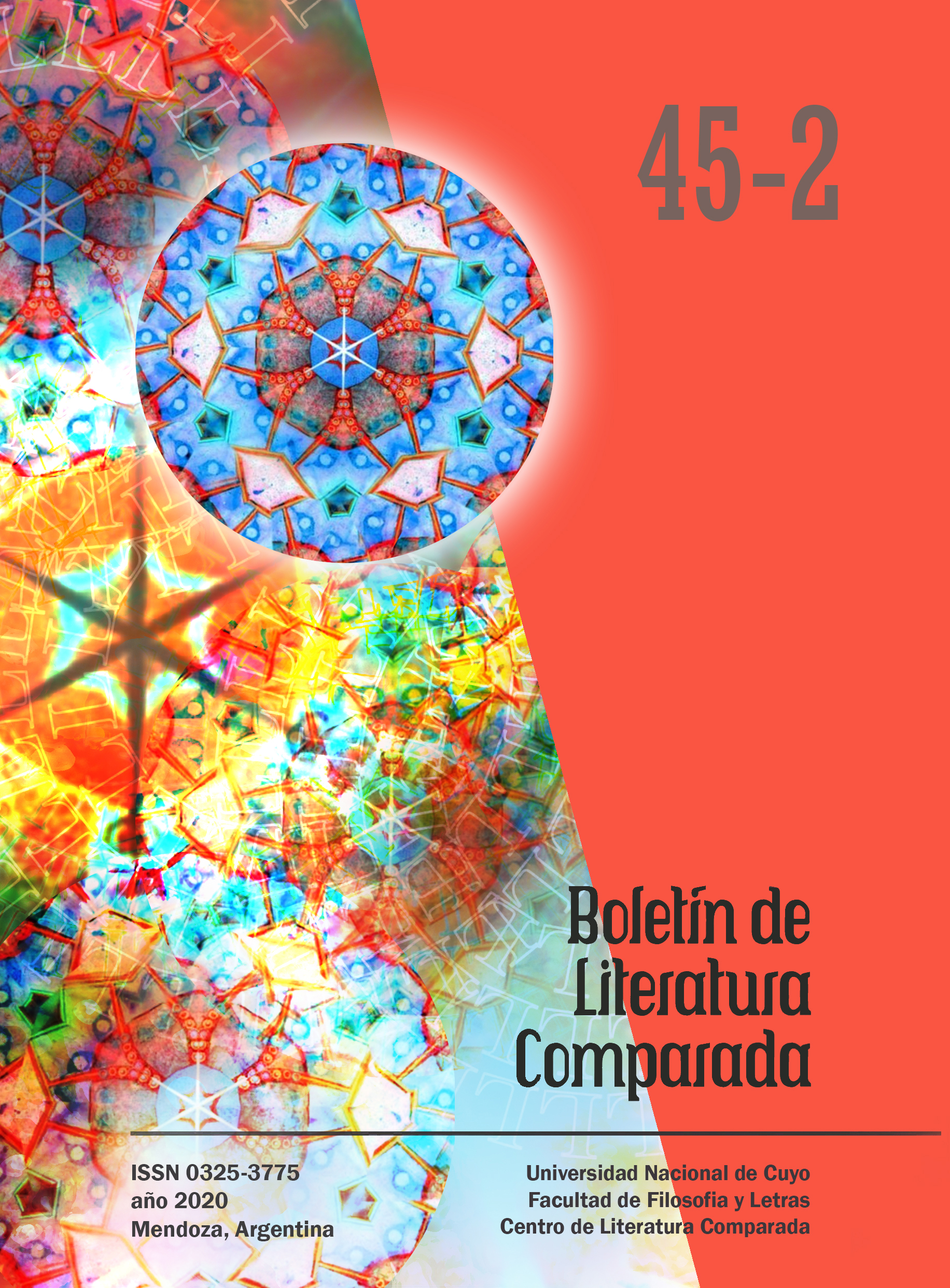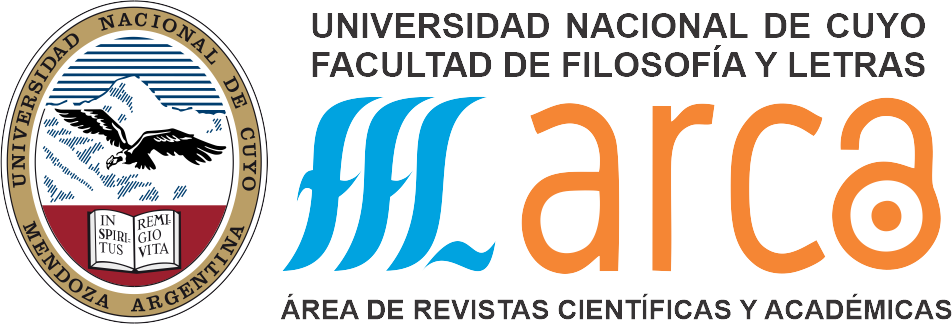Borges y el budismo. Una discusión de fuentes en torno al libro de Sonia Betancort
Palabras clave:
Borges, Orientalismo, Tradiciones indias, Budismo, Crítica GenéticaResumen
En Oriente no es una pieza de museo (2018), Sonia Betancort, profesora de Literatura en la Universidad Camilo José Cela, indaga en la influencia de las tradiciones religiosas indostánicas, en particular el budismo, y del orientalismo europeo en Borges. Gran parte del libro está dedicada al análisis genético del manuscrito de ¿Qué es el Budismo? (1976), ensayo escrito con Alicia Jurado. Betancort adopta un enfoque comparatista al analizar el manuscrito y la versión editada sin olvidar la obra completa de Borges, así como hitos de su biografía, relevantes en cuanto a su relación con Oriente. Con el presente trabajo, nos proponemos revisitar con rigor el libro de la investigadora, discutiendo algunos de sus postulados y fuentes. Betancort divide su estudio en dos partes; primero se detiene en el derrotero del escritor en cuanto a su aproximación al Oriente interesándose particularmente en las épocas de la infancia y de la juventud. La autora pretende dar cuenta de una evolución en la sensibilidad de Borges que lo lleva poco a poco hacia el budismo. En la segunda parte del libro, dividida en siete capítulos, Betancort se centra en el análisis propiamente genético: en concreto, se focaliza en el estudio comparativo entre el manuscrito y el ensayo del primer capítulo hasta el quinto capítulo de su trabajo dejando el sexto y el último capítulo a la parte del ensayo redactada sin el apoyo del manuscrito. Comentaremos el libro respetando el esquema de la autora y haremos algunas sugerencias sobre los temas elegidos, así como la validez de la crítica genética a nivel teórico.
Citas
BÉTANCORT, Sonia, Oriente no es una pieza de museo: Jorge Luis Borges, la clave orientalista y el manuscrito de "Qué es el budismo". Salamanca: Ediciones Universidad de Salamanca, 2018.
BIASI, Pierre-Marc de, Génétique des textes. París: Armand Colin, 2005.
BIASI, Pierre-Marc de, "Qu’est-ce qu’une rature?", 2016. <[http://www.pierre-marc-debiasi.com/litterature/affichetext.php?src_texte=2016&id_rub=2/]>, 13/03/2020.
BORGES Jorge Luis, Obras completas. Barcelona: Emecé, 1989.
BORGES Jorge Luis/ JURADO, Alicia, Qué es el budismo. Madrid: Alianza, 2000.
BURGIN Richard/ BORGES, Jorge Luis, Conversations with Jorge Luis Borges. London: Souvenir Press, 1973.
BURLEY, Mikel, Classical Samkhya and Yoga: An Indian Metaphysics of Experience. New York: Routledge, 2007.
CAMPRUBÍ, Carles Besa, "Escritura y genética textual", 1996. < [https://dialnet. unirioja.es/servlet/articulo?codigo=3203983]>,17/07/2020.
CERQUIGLINI, Bernard, "Variantes d'auteur et variance de copiste". En: HAY, Louis, La Naissance du texte. París: J. Corti, 1989.
COLLINS, Steven, Selfless Persons: Imagery and Thought in Theravada Buddhism. Cambridge: Cambridge University Press, 1990.
ECO, Umberto, "Capolavori dell’800, ecco Notre Dame, l’introduzione di Umberto Eco", 2003. <[https://www.repubblica.it/speciale/2004/biblioteca/idee/eco.html] >, 17/07/2020.
GASQUET, Axel, El llamado de Oriente, historia cultural del orientalismo argentino 1900-1950. Buenos Aires: Eudeba, 2015.
GRÉSILLON, Almuth, Eléments de critique génétique: lire les manuscrits modernes. París: Presses universitaires de France, 1994.
GUTTING, Gary, "What does buddhism require?", 2014. <[https://opinionator.blogs. nytimes.com/2014/04/27/what-does-buddhism-require]>, 18 de julio de 2020.
HADOT, Pierre, N’oublie pas de vivre: Goethe et la tradition des exercices spirituels. París: Albin Michel, 2014.
JAVANAUD, Katie, "Is The Buddhist ‘No-Self’ Doctrine compatible with pursuing Nirvana?", 2013. <[https://philosophynow.org/issues/97/Is_The_Buddhist_No-Self_Doctrine_Compatible_With_Pursuing_Nirvana] >, 13 de abril de 2020.
JENNY, Laurent, "Genetic criticism and its myths". En: Yale French Studies, 97 (2000): 198-214.
MÉLANÇON, Robert, "Le statut de l’Å“uvre: sur une limite de la génétique". En: Études françaises 28, 1 (1992), 49-66.
PINO, Claudia, "O quê interpretar?". En: Revista do Programa de Pós-Graduaçao em Letras da Universidade de Passo Fundo 10, 2 (2014), 259-273.
PLANTE, Claudia, Borges, el otro Schopenhauer [tesina de Maestría inédita]. Universidad Clermont Auvernia, 2018.
POPPER, Karl, The Logic of Scientific Discovery. New York: Routledge, 2002.
RICARD, Matthieu/ REVEL, Jean-François, Le moine et le philosophe: le bouddhisme aujourd’hui. París: Robert Laffont, 2012.
RÍOS, Rubén Horacio, Borges y el anillo del ser: un estudio sobre literatura y metafísica. Madrid: Editorial Verbum, 2018.
SHAKESPEARE, William, The Tempest. Oxford: Oxford University Press, 2001.
WOODALL, James, La vida de Jorge Luis Borges: el hombre en el espejo del libro. Barcelona: Gedisa, 1999.



















